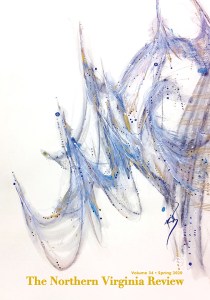The Candy Factory Hosts Delaware Poets
Many thanks to everyone who came out to the reading at The Candy Factory in Lancaster, PA on May 5. It was an amazing gathering. Hope we can do it again soon. Thanks to The Candy Factory for hosting and to Dana Kinsey, Ruth O’Gara, and Jose Padua for reading and for all their help. Here are the evenings readers. Thanks to Linda Adams Blaskey and Jane Miller for the beautiful poems.
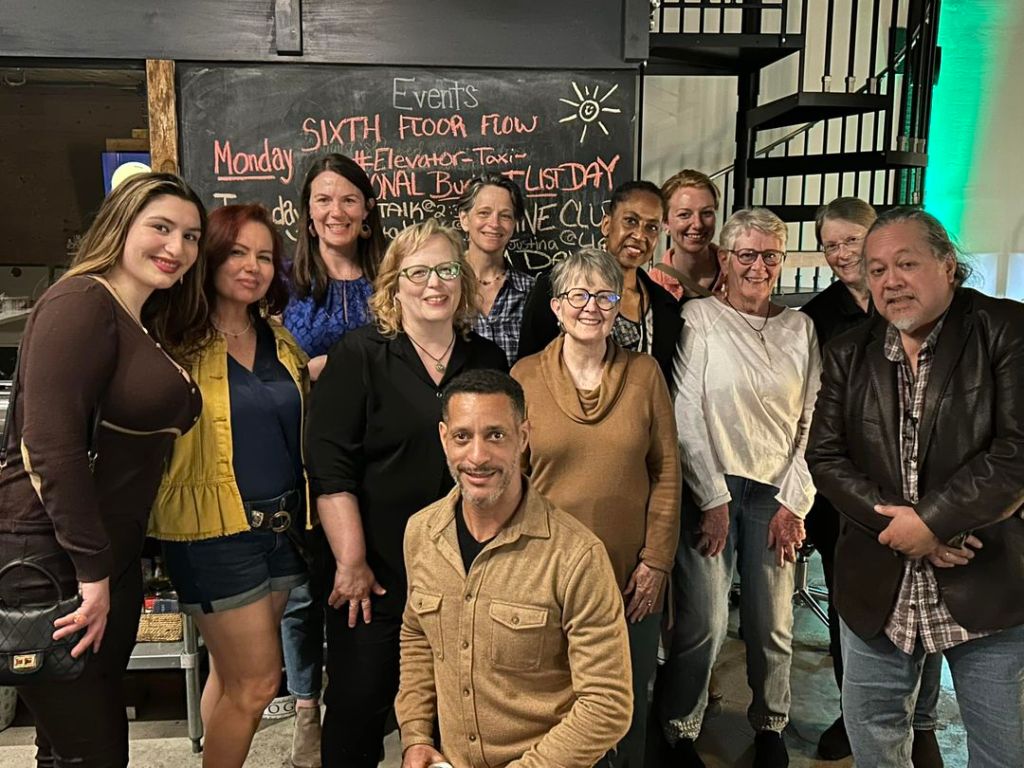
Thank You, Poetry in Transit Luzerne County, PA
Hope folks riding buses in Wilkes-Barre, PA enjoy my little poem about Intention. Thanks to Jennifer Judge and the entire staff who make Poetry in Transit possible. Many beautiful poems will greet bus riders this fall.
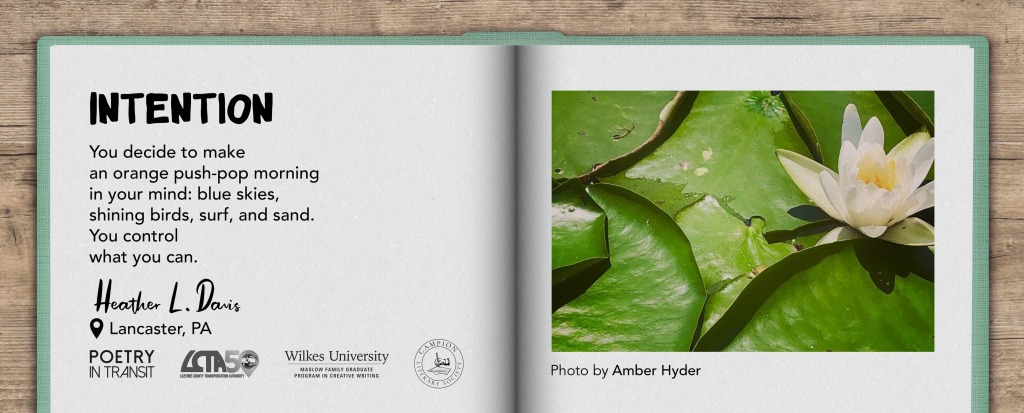
What Does Your House Mean to You?
My poem “Houses” highlights a certain spouse’s obsession with finding houses that dream. Thanks to the ASP Bulletin for publishing it.

A Poem about the Edges of Things

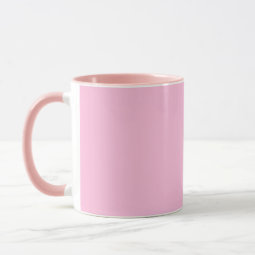 Thanks to the Quartet Journal for publishing a poem about leaving and edges and the gifts children give you without even trying. “The Pale Pink Ceramic Mug for Instance” appeared in the Summer 2022 issue.
Thanks to the Quartet Journal for publishing a poem about leaving and edges and the gifts children give you without even trying. “The Pale Pink Ceramic Mug for Instance” appeared in the Summer 2022 issue.
Two Poems Published in Written in Arlington
Thanks to Katherine E. Young for choosing my poems “Green Card” and “Folk Art” for the anthology, Written in Arlington, Poems of Arlington, Virginia. Although I live in D.C., I have worked for 20 years in Arlington–first in Rosslyn and now in Crystal City. This is a rich anthology on a myriad of topics, but all tied in some way to this diverse and unique area. I was also able to read my poem “Folk Art” at an online event hosted by the Arlington Public Library series, “From Diane’s Livingroom.” We had a great discussion about poetry and Arlington. See the YouTube Video of Arlington Public Library Poetry Reading: Live From Diane’s Living Room! Ep. 9: Written in Arlington with Poet Katherine E. Young and Friends, December 18, 2020.

Three Poems Published in Marsh Hawk Press Review
These poems have been cooking for a long time and finally found their true shape and audience in the Marsh Hawk Press Review, Spring 2021, edited by the incomparable Eileen R. Tabios. The eco-poem, “Porch Sitting,” about the beautiful Blue Ridge mountains haunted me for a long time. Having lived in the Shenandoah Valley for 10 years, I can still hear those mountains.

Four Poems Published in Fledgling Rag
The beautiful journal Fledgling Rag published by Iris G. Press has included 4 of my poems in Issue #20. The poems explore difficult topics from female genital mutilation to racial profiling to gun control. Thanks so much to Lisa Munson and Le Hinton for giving these poems a home among such great company, including poems by Jose Padua, Reuben Jackson, Brandon D. Johnson, Rose Solari, Truth Thomas, Sarah Ann Winn, and featured poet Holly Karapetkova.

All the proceeds from the sale of Fledgling Rag go directly to the Lancaster Cleft Palate Clinic. Issue 20 costs $20 but is on sale for $15. Previous issues are $10. You can send your total payment directly the Lancaster Cleft Palate Clinic online at:
Poem on Parenting a Neurodiverse Child Published in Northern Virginia Review
My poem, “That Kid,” has been published by the wonderful Northern Virginia Review. Our kids with differences take a lot of heat from people who have no idea what drives their behaviors. But these kids are brilliant and need to develop at their own unique pace to really shine.
Volume 34, Spring 2020 can be read here.
Furious Gravity Highlights DC Women Writers
New fiction and non-fiction by 50 DC-area women–what could be better? I’m so honored that my essay, “Be the Ocean: Everyday Lessons in Rage,” is included. These stories and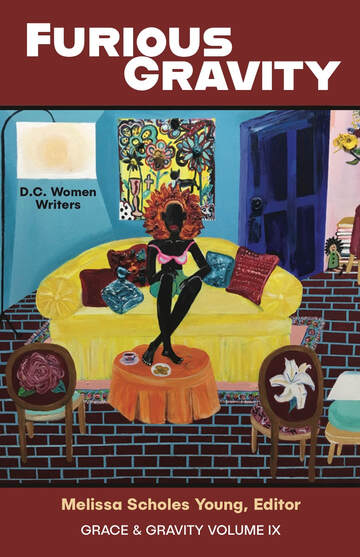 essays take readers to unexpected places with grace and gravity. Edited by Melissa Scholes Young, this anthology is the 9th in the Grace and Gravity series founded by Richard Peabody to highlight the work of women writers. Despite challenges presented by the COVID-19 pandemic, Melissa and her team, including her students at American University, have managed to publish and promote this volume with style.
essays take readers to unexpected places with grace and gravity. Edited by Melissa Scholes Young, this anthology is the 9th in the Grace and Gravity series founded by Richard Peabody to highlight the work of women writers. Despite challenges presented by the COVID-19 pandemic, Melissa and her team, including her students at American University, have managed to publish and promote this volume with style.
Buy the book at Politics & Prose
Launch Events below.
The Writer’s Center: May 3rd at 3 pm EDT |
Join us for a virtual reading by contributors to the new anthology of DC women writers, Furious Gravity!
https://www.writer.org/event/furious-gravity/ |
Politics and Prose Live: May 10th at 3 pm EDT |
Everyone is invited! Mary Kay Zuravleff and Tara Campbell will be reading and answering questions. We’ll be celebrating all contributors on this huge platform. It will be an interactive livestream; I hope you’ll register and join us: https://www.crowdcast.io/e/grace-gravity-ix/register
|
Readings on the Pike: May 14th at 7:00 pm EDT |
This will be a live reading with contributors reading!
Facebook page: https://www.facebook.com/groups/readingsonthepike/ Events page: https://www.facebook.com/events/233099917744353/ |
The Fun of Virtual Workshops: Taking an Online Writing Course
 Busy working moms who need to write and also communicate with a writing community but are short on time and resources can turn to online writing classes. They are a convenient way to learn, share, and build new relationships with follow writers. Most, if not all courses, allow you to make your own hours. A six-week online novel writing course from Curtis Brown Creative, out of London consists of short well-produced videos and focused tasks that are then shared with other students. Each week the instructors choose the work of several students to critique. The online platform is easy to use and attractive. I am currently in this course and am surprised at the high quality of work from all of the students, as well as their friendliness and openness. Though not free, the price is reasonable and no more than a class at the local writer’s center. For people who have trouble carving out learning time from motherly and work duties, this kind of online course set-up is brilliant.
Busy working moms who need to write and also communicate with a writing community but are short on time and resources can turn to online writing classes. They are a convenient way to learn, share, and build new relationships with follow writers. Most, if not all courses, allow you to make your own hours. A six-week online novel writing course from Curtis Brown Creative, out of London consists of short well-produced videos and focused tasks that are then shared with other students. Each week the instructors choose the work of several students to critique. The online platform is easy to use and attractive. I am currently in this course and am surprised at the high quality of work from all of the students, as well as their friendliness and openness. Though not free, the price is reasonable and no more than a class at the local writer’s center. For people who have trouble carving out learning time from motherly and work duties, this kind of online course set-up is brilliant.
Poem in Ghost Fishing: An Eco-Justice Anthology

So honored to have my poem “29 Men” about the Upper Big Branch mine tragedy in this eco-justice anthology. This is a broad and moving collection of work.
Ghost Fishing
An Eco-Justice Poetry Anthology
Reviews
“These poems record the perspectives of Asian men and black women, newly published poets and cornerstone voices of the twentieth century, working-class Americans and women who work on their knees clearing landmines ‘In Jordan’s Northernmost Province.’ In fact, the poets represented between these covers represent far more demographic classifications than I could possibly name. The house built in this anthology is one of many interconnecting rooms.”
—Camille T. Dungy, from the foreword
Description
Ghost Fishing is the first anthology to focus solely on poetry with an eco-justice bent. A culturally diverse collection entering a field where nature poetry anthologies have historically lacked diversity, this book presents a rich terrain of contemporary environmental poetry with roots in many cultural traditions.
Eco-justice poetry is poetry born of deep cultural attachment to the land and poetry born of crisis. Aligned with environmental justice activism and thought, eco-justice poetry defines environment as “the place we work, live, play, and worship.” This is a shift from romantic notions of nature as a pristine wilderness outside ourselves toward recognition of the environment as home: a source of life, health, and livelihood.
Ghost Fishing is arranged by topic at key intersections between social justice and the environment such as exile, migration, and dispossession; war; food production; human relations to the animal world; natural resources and extraction; environmental disaster; and cultural resilience and resistance. This anthology seeks to expand our consciousness about the interrelated nature of our experiences and act as a starting point for conversation about the current state of our environment.
Contributors include Homero Aridjis, Brenda Cárdenas, Natalie Diaz, Camille T. Dungy, Martín Espada, Ross Gay, Joy Harjo, Brenda Hillman, Linda Hogan, Philip Metres, Naomi Shihab Nye, Tolu Ogunlesi, Wang Ping, Patrick Rosal, Tim Seibles, Danez Smith, Arthur Sze, Eleanor Wilner, and Javier Zamora.
A Compilation of Bday Wishes for Jose Padua
Happy Birthday Booklet for Jose Padua
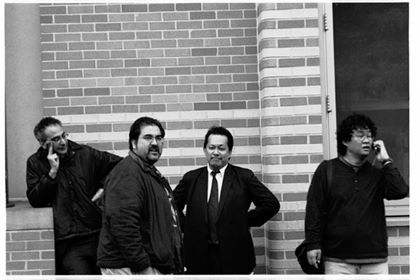
A sample:
Houses
–for José on his birthday
You send me another one, at work, mid-morning, pixels
flying through the ether to form pictures of a life
five feet closer to perfect: emails that link to dream house
after dream house, each one more virtuous than the next,
at the beach, in the city, hidden in towns we’ve never heard of.
You don’t tire of looking because what if it exists—
that single impossible find—like an undiscovered planet
in an infant universe spinning miles from the skittish
dogs next door, the cops stopped across the street again,
and the bleary-eyed woman, cigarette alight, whose racist slurs
fail to break the lawn guy. What if it’s out there, far
from small-town stillness and mortal time?
The house we live in now, one hundred years old, sits
on stone, telling fortunes to the wind, whispering
sweet nothings we love but should ignore. Remember,
years ago, on the train ride out west, my hand warm
under yours, yours solid over mine as we sliced through the night,
shrinking valleys and mountains, searching. Remember
the births—a girl, then a boy—their tiny bodies like harbor lights
in the darkness of our room, signaling this is home? It’s enough
and never enough. We all deserve a roof—of metal, wood, or clay—
but also something diaphanous that lets in moonlight
and distance, that serves up stars in their eternal shining. We’re always
building houses, all of us, in our own blood, in our lover’s eyes,
real ones for shelter and metaphors to stretch out in as we run.
–Heather Davis
Tips for Using Art for Activism in Your Community
 Tips for Using Art for Activism in Your Community
Tips for Using Art for Activism in Your Community
Art is never created in a vacuum. Artists are part of their communities. What they create can bring people together, but also challenge those around them to think in new ways.
There are a million ways grassroots activists can use art to call attention to issues that affect the immediate and larger environment. Sometimes, that art is provocative, sometimes playful, sometimes profoundly moving.
Variety Show Events
- Purpose: Showcase events that highlight a particular theme can bring artists together from a range of disciplines. This type of event is a great way to build community among the artists themselves and between their varied audiences.
- Theme: The theme can be anything the organizers believe needs to be addressed (climate change, immigration rights, LGBTQ rights, women’s issues, diversity, freedom of speech, etc.).
- Call for Work: Artists can be invited to create pieces specific to the theme.
- Robust Line-up: Having a full line-up of artists (writes, dancers, musicians, actors, visual artists) helps bring in a larger audience.
- Open Mic: Hosting an open mic as part of the evening lets others feel that they have a voice and can participate.
- Fundraising: Such events can also function as fundraisers for good causes.
- Awards: Organizers can also award prizes for the best works created or honor a local artist who had contributed to the community. Giving prizes to different age categories (child, teen, adult) can bring in lots of audience members.
- Audience Participation: Events can be used to involve the audience in creating art works about the focus issue or messages to leaders you want to influence. Audience members might create a group mural or poem. Or you can provide pre-addressed postcards for audience members to write messages to leaders.
- Logistics: Have a large group of volunteers break up tasks such as providing food and drinks, setting up the venue, promoting the event, handling media, coordinating with the artists, and acting as MC.
- Signage: Colorful signage with clear bold lettering and a consistent graphic look and feel can help give your events identity and legitimacy. Keep the signs generic enough to be used over and over. Nice banners and posters of various sizes can be printed inexpensively through stores like Staples or Office Depot.
- Promotion: Make sure to use social media to promote your event as well as posting fliers and sending out blast emails. Post and share teasers that highlight the work of participating artists. Send press releases to local papers. Have all participating artists and organizations share through their networks.
- Collaboration: Collaborating with establish organizations to plan and host your event will greatly increase your reach. Consider partnering with local arts nonprofits and councils, women’s groups, immigrant groups, etc. Tap into their PR and volunteer networks.
- Documentation: Find a volunteer who can take photos and video at the event and is willing to share them freely for some publicity. Post and share these images after the event to build momentum and community. Write articles for local papers describing the event and its outcomes, especially if you are trying to raise awareness of a particular issue.
- Examples: Poetry reading that features diverse voices from many ethnic backgrounds. Youth event that focuses on how we can save our environment. An events that asks artists from different disciplines to respond to each other with new art works on particular topics.
Installations
- Purpose: Art installations can be placed in public or private spaces to start discussion and be the focal point for performances or protests.
- Process: Work with local groups to plan the creation of an installation. You can place a call for artwork and build a committee to assemble the work and promote it.
- Spaces: Ask local governments for permission to assemble an installation for the public or work with businesses that have the space and desire to be hosts.
- Involvement: Make the installation interactive, with a way to leave comments or add to the artwork (within certain guidelines).
- Promote: Hold an event to unveil the installation with music, readings, etc.
- Examples: “Build a Bridge, Not a Wall” project that asks participants to create artworks on cardboard “bricks” that will be assembled into bridge at various locations and for different events. The “PostSecret” project asks people to write down something they have never told anyone and send that secret on a postcard to the organizers. The postcards are anonymous and can be displayed for the public to read and to spark discussion.
Flash Mobs
- What Is It? Participants pop up and perform in a public space with no advance warning. They may be friends or strangers. They disperse just as quickly.
- Purpose: These can be used to create attention for a specific cause or make a strong statement.
- Includes: Performances can entail almost anything—music, dance, poetry, or just standing still or lying down.
- How: Send dates and times through social media to participants willing to show up and perform at public places. The more participants, the stronger the message. The “performance” should seem spontaneous and sudden, as if coming out of nowhere. These can involve lots of prep time to rehearse a coordinated piece or no prep time at all.
- Promotion: Media can be tipped off if you want the performance covered.
- Examples: Musicians perform “Here Comes the Sun” at an unemployment office in Spain. An unsuspecting woman places a plastic bottle in a recycling bin and is applauded by 2,000 bystanders to highlight the problem of plastic waste in Quebec. Concerned citizens sing a song about justice in a walking mall in Winchester, VA.
Art in Everyday Places
- Purpose: To remind community members of an issue, problem, or solution or of the healing power of art in everyday life.
- How: Work with local business and arts organizations to provide works of art in shops, businesses, community centers, government buildings, and schools.
- Event: Hold an event to launch the project with a walking tour of sites with art. Include a reading of poems or stories to go with the chosen topic.
- Awards: Hold a contest for community members of all ages to submit art works to be put on display. Ask for art on a specific topic or celebrating something about the local area.
- Examples: Poetry books in motels. Framed poems in shop bathrooms. Paintings in laundromats. Brightly painted pianos in outside spots all over a downtown area.
Resources
- Americans for the Arts: http://www.americansforthearts.org/
- Bread and Puppet Theatre Company: http://breadandpuppet.org/
- 1,000 Faces Mask Theatre: http://www.1000facesmasktheater.com/
- Split This Rock: Poetry of Provocation & Witness http://www.splitthisrock.org/
- Article on Artists as Activists:
http://www.huffingtonpost.com/amy-pleasant/artists-as-activists-purs_b_11783614.html
- Magazine Series on Arts and Activism: http://www.nationalcollective.com/category/political-art-and-activism/
Examples of Art as Activism in Front Royal, VA
https://royalexaminer.com/2017/07/05/selah-theatre-event-art-saves-lives-success/
https://royalexaminer.com/2017/04/05/poets-speak-diversity-packed-selah-theatre/
https://royalexaminer.com/2017/07/06/theatre-with-a-purpose/
7 Sentences with Maggie Stiefvater and Courtney Stevens in Richmond, VA
Giant Jenga played on a stage with huge cardboard boxes is an apt metaphor for the writing process. Stiefvater and Stevens used this visual symbol to end their day-long seminar on using the first 7 sentences of your manuscript to set the stage for and encapsulate the entire novel. They called volunteers on stage to nudge giant cardboard boxes out of a huge Jenga tower and stack them on top. Soon, someone had to go searching for a ladder.
It didn’t seem like the tower could hold for very long. Everyone held their breath as a daring volunteer pulled at a box near the bottom. Then it happened–the whole thing started to tilt left where Court Stevens was standing. Then bam! The tower was down and the stage a mess of boxes. Stevens jumped out of the way just in time.
This is what all writers experience–the collapse–the failure. But you keep playing the game. You go back to it and try to balance perfectly again and again, getting better, going longer. It is play and risk. And you repeat the process.
Stiefavter and Stevens are funny, personable, high-energy teachers–a sort of Laurel and Hardy team, with Stiefvater the comically stern Hardy to Stevens goofy Laurel. They packed a lot into 8 hours, leading 200 aspiring writers through exercises and examples. They shared stories about how their own lives have informed their writing and insights into the characters they’ve built, which kept everyone engaged and fascinated.
Audience members came from as far away as Seattle to hear from these two. We walked away with new tools, great insights into the creative process, and phrases our fearless leaders kept repeating: ideas are disposable, keep creating, it’s not about that first book–put it away and keep writing new things. Take those risks because it is what creators do–they keep creating. 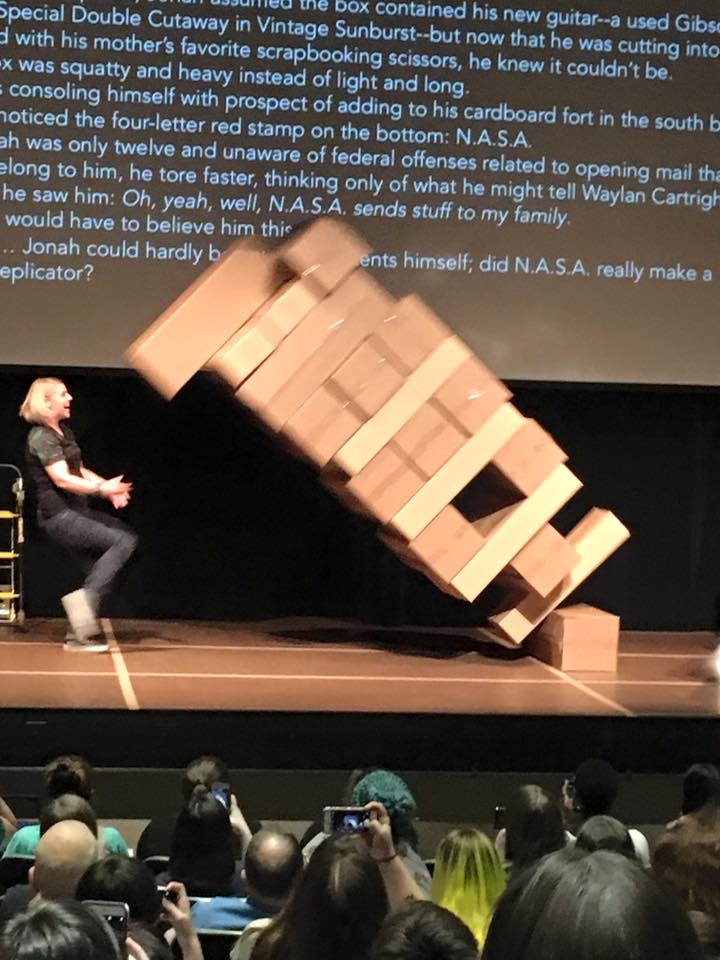
My Short Story “The Ocean at Night” Has Been Published in Beach Anthology!
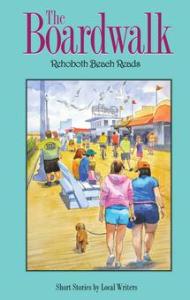 My second published short story is out now as part of the anthology Rehoboth Beach Reads: The Boardwalk.
My second published short story is out now as part of the anthology Rehoboth Beach Reads: The Boardwalk.
Now Available!
A fortune-telling machine with a mind of its own, professional killers hanging out by the hotel pool, granny run amok in Funland…what’s happened to Rehoboth? Some very talented writers have created a book of great beach reads, that’s what. If you liked The Beach House, you’re going to loveThe Boardwalk. Short stories set in and around Rehoboth Beach, guaranteed to entertain.
Check out Cat and Mouse Press for more information. These are fun collections.
Poem Accepted for Anthology Three Minus One
I’ve had a poem accepted for an anthology on miscarriage and still birth. It’s a difficult topic but this anthology should bring light and comfort to couples who have been through this loss. Check it out:
http://shewritespress.com/congratulations-three-minus-one-contributors/
My First Short Story to be Published!
 This summer, while on vacation at Rehoboth Beach, I noticed a flyer in Browse About Books, one of our favorite spots, for a short story contest. The winners would be published in an anthology called Rehoboth Beach Reads. This was clearly a way to lure us back to the beach for a book launch. I needed to be in this book!
This summer, while on vacation at Rehoboth Beach, I noticed a flyer in Browse About Books, one of our favorite spots, for a short story contest. The winners would be published in an anthology called Rehoboth Beach Reads. This was clearly a way to lure us back to the beach for a book launch. I needed to be in this book!
The theme for the anthology was “The Beach House.” Since I’ve been in young adult fiction-writing mode, a story came to me in the voice of a teenaged boy at the beach who loves ghost hunting and also is in need of a friend. He’s saved his money to book a spot in a big late-night ghost hunt in Lewes, Delaware but that’s not where he finally meets his otherworldly match.
I worked on the story for a few weeks, getting to know this sweet and goofy kid, then sent it in. Lo and behold, the editors accepted “The Ghost of Henlopen Avenue” for the anthology.
The book will be out in late 2013 from Cat and Mouse Press.
Check the website here to order copies. Should be a fun collection!
Thanks to the Bethesda Lit Festival
Somehow, I won second place in both the poetry and the essay categories in the 2013 Bethesda Literary Festival contests. That was a nice surprise and I really enjoyed ready my pieces at the festival. The Bethesda Magazine will publish the winning entries on their website soon. My essay, Breeder’s Ball, explores secondary infertility and young egg envy. My poem, Wear This Song, is below:
Wear This Song
–for Con Burch
In a music video by Beth Orton, the song she sings
is a dress you put on and dance in down the dirty city street,
that you pass to neighbors and strangers, women and men,
that you wrap around children, and that you force
onto anyone foolish enough to refuse it.
The song is thin and red with white flowers. It swings
and shimmers. It flips. When Orton takes it off,
she’s clothed only in a slip but
she has to share the dress, to see
how it fits the large ladies bumping, and the old man
smoking, and the guy with the huge muscles and the tattoos
as he skateboards over pavement, the silky notes flapping
like wings behind his back.
Diversity in YA Best Sellers
Author Melinda Lo has done some great stat crunching to analyze the number of diverse main characters and supporting characters in recent best selling YA.
Not many bright spots here although there seems to be an increasing number of supporting characters that qualify as “diverse” in her definition, which includes characters of color, LGBT, and characters with disabilities.
http://www.malindalo.com/2013/04/diversity-in-2012-young-adult-bestsellers/
Can’t help thinking that if the industry stopped white washing covers and was willing to really promote more diverse YA lit, those books would surface and would sell.
Bethesda, MD Literary Festival 2013
Somehow I’m a finalist in the essay and poetry contests sponsored by the Bethesda Literary Festival. I’ll be attending on April 19 and 20 to read and find out if I’ve actually won anything. It’s nice to get this little bit of recognition in the midst of finishing up my young adult novel, which can be a pretty isolating process. It’s so much easier to figure out whether or not a poem is working and has merit for anyone other than the muse in your head. But with longer fiction, all bets are off. Sure, you can get feedback on pieces but does the whole big monster story work? Have you wasted two years worth of stolen moments used to scribble the thing out?
Hope not!
Check out the Bethesda Festival, if you are in the area: http://www.bethesda.org/specialevents/litfest/litfest.htm

